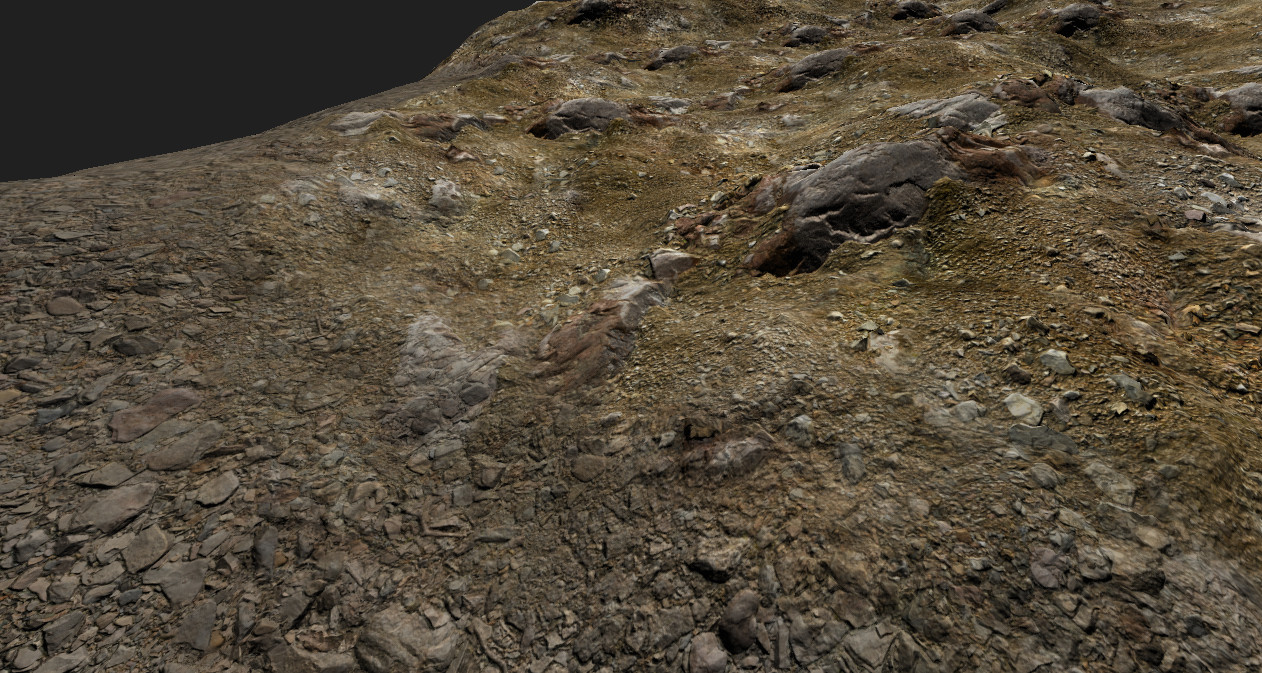Finalizing Terrain
I'm wrapping up the terrain features now for the initial release. Here's a summary of terrain in Ultra Engine.
Terrains are an entity, just like anything else, and can be positioned, rotated, or scaled. Non-square terrains are supported, so you can create something with a 1024x512 or whatever resolution. (Power-of-two sizes are required.)
Editing Terrain
Ultra Engine includes an API that lets you modify terrain in real-time. I took something very complicated and distilled it down to a very simple API for you:
terrain->SetElevation(x, y, height);
That's it! The engine will automatically update normals, physics, raycasting, rendering, and other data for you behind the scenes any time you modify the terrain, in a manner that maximizes efficiency.
Materials
Leadwerks supports 32 terrain texture layers. Unity supports eight. Thanks to the flexibility of shaders in Vulkan, any terrain in Ultra can have up to a whopping 256 different materials applied to it, and it will always be rendered in a single pass at maximum speed.
To apply a material at any point on the terrain, you just call this method. The weight value lets you control how much influence the material as at that point, i.e. its alpha transparency:
terrain->SetMaterial(x, y, material, weight)
This example shows how to paint materials onto the terrain.

I'm quite happy with how the documentation system has turned out, and I feel it is representative of the quality I want your entire user experience to be.
All the API examples load media from the web, so there's no need to manually download any extra files. Copy and paste the code into any project, and it just works.
//Create base material auto diffusemap = LoadTexture("https://raw.githubusercontent.com/Leadwerks/Documentation/master/Assets/Materials/Ground/river_small_rocks_diff_4k.dds"); auto normalmap = LoadTexture("https://raw.githubusercontent.com/Leadwerks/Documentation/master/Assets/Materials/Ground/river_small_rocks_nor_gl_4k.dds"); auto ground = CreateMaterial(); ground->SetTexture(diffusemap, TEXTURE_DIFFUSE); ground->SetTexture(normalmap, TEXTURE_NORMAL);
Tessellation and Displacement
Tessellation works great with terrain, which is modeled with quads. There are a lot of high-quality free PBR materials that are great for VR available on the web, so you will have no shortage of interesting materials to paint your terrains with. Here are a few sites for you to peruse:
https://matlib.gpuopen.com/main/materials/all
https://icons8.com/l/3d-textures
https://ambientcg.com/
https://polyhaven.com/textures
https://freepbr.com/
https://www.cgbookcase.com/textures
Cutting Holes
You can cut holes in the terrain by hiding any tile. This is useful for making caves, and can be used in the future for blending voxel geometry into a heightmap terrain.
Shader Design
Shaders in Ultra are big and quite complicated. I don't expect anyone to make 100% custom shaders like you could with the simpler shaders in Leadwerks. I've structured shaders so that the entry point shader defines a user function, then includes the base file, which calls the function:
#version 450 #extension GL_GOOGLE_include_directive : enable #extension GL_ARB_separate_shader_objects : enable #define LIGHTING_PBR #define USERFUNCTION #include "../Base/Materials.glsl" #include "../Base/TextureArrays.glsl" void UserFragment(inout vec4 color, inout vec3 emission, inout vec3 normal, inout float metalness, inout float roughness, inout float ambientocclusion, in vec3 position, in vec2 texcoords, in vec3 tangent, in vec3 bitangent, in Material material) { // Custom code goes here... } #include "../Base/base_frag.glsl"
This organizes shaders so custom behavior can be added on top of the lighting and other systems, and paves the way for a future node-based shader designer.
Future Development
Ideas for future development to add to this system include voxel-based terrains for caves and overhangs, roads (using the decals system), large streaming terrains, and seamless blending of models into the terrain surface.
-
 5
5

 SCP
SCP




12 Comments
Recommended Comments